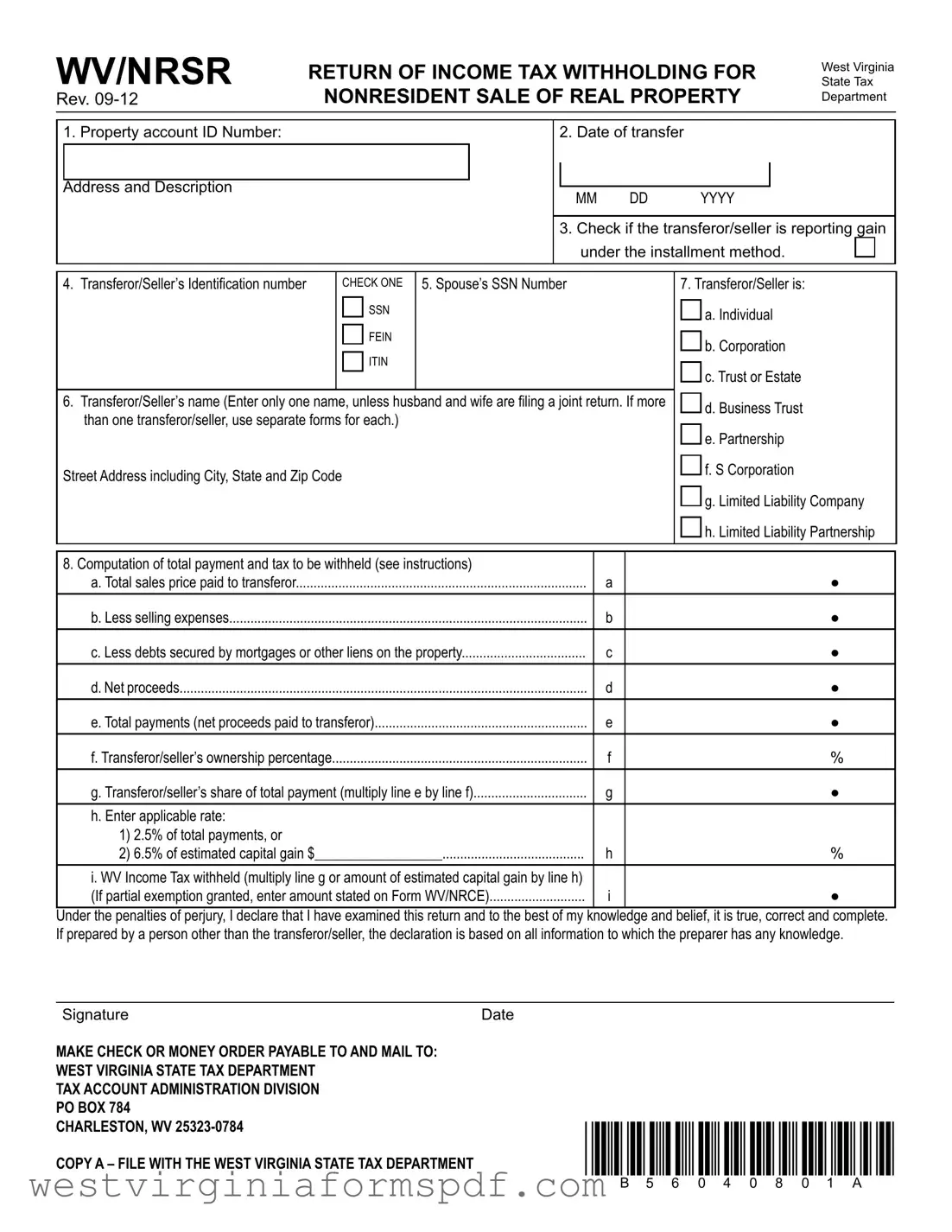The WV/NRSR form is similar to the IRS Form 1099-S, which is used for reporting the sale of real estate. Both forms are designed to ensure that the appropriate taxes are withheld during the sale of property. The 1099-S specifically reports the proceeds from the sale, while the WV/NRSR focuses on the income tax withholding for nonresidents. Both documents require details about the property, the seller, and the financial aspects of the transaction, ensuring compliance with tax regulations.
Another comparable document is the IRS Form 1040, which is the standard individual income tax return form. While the 1040 is used to report annual income and claim deductions, it also includes provisions for reporting capital gains from property sales. The WV/NRSR form, on the other hand, is specifically for nonresidents selling real property in West Virginia and addresses withholding requirements at the time of the sale, making it a more immediate concern for tax compliance.
For those navigating the intricacies of boat transactions, utilizing resources such as the https://smarttemplates.net can provide essential guidance and clarity, particularly regarding the necessary legal documentation and compliance requirements involved in a boat sale.
The WV/NRSR form is also similar to the IRS Form 8288, which is used for withholding tax on dispositions of U.S. real property interests by foreign persons. Both forms serve the purpose of ensuring that taxes are collected from sellers who may not be residents. However, the Form 8288 is specifically targeted at foreign sellers, while the WV/NRSR is aimed at nonresident sellers within the U.S., focusing on state-level tax obligations.
Additionally, the state of West Virginia has a form known as the WV/NRCE, which is used for claiming a partial exemption from withholding tax. This document is relevant when a seller qualifies for a reduction in the amount withheld. The WV/NRSR form works in conjunction with the WV/NRCE, as it calculates the withholding tax based on the sale while the NRCE provides the basis for any exemptions, ensuring that sellers are not overtaxed during the transaction.
The IRS Form W-9 is another document that shares similarities with the WV/NRSR form. The W-9 is used to provide taxpayer identification information to entities that will report income to the IRS. While the W-9 focuses on providing identification for tax purposes, the WV/NRSR form requires this information to ensure that the correct amount of tax is withheld from the sale of property. Both forms are essential for proper tax reporting and compliance.
Finally, the IRS Form 1041, which is the U.S. Income Tax Return for Estates and Trusts, is relevant in the context of property sales involving estates or trusts. Similar to the WV/NRSR, this form addresses tax obligations related to the sale of property held in an estate or trust. Both forms require detailed information about the seller and the transaction, ensuring that tax liabilities are met according to the law.
